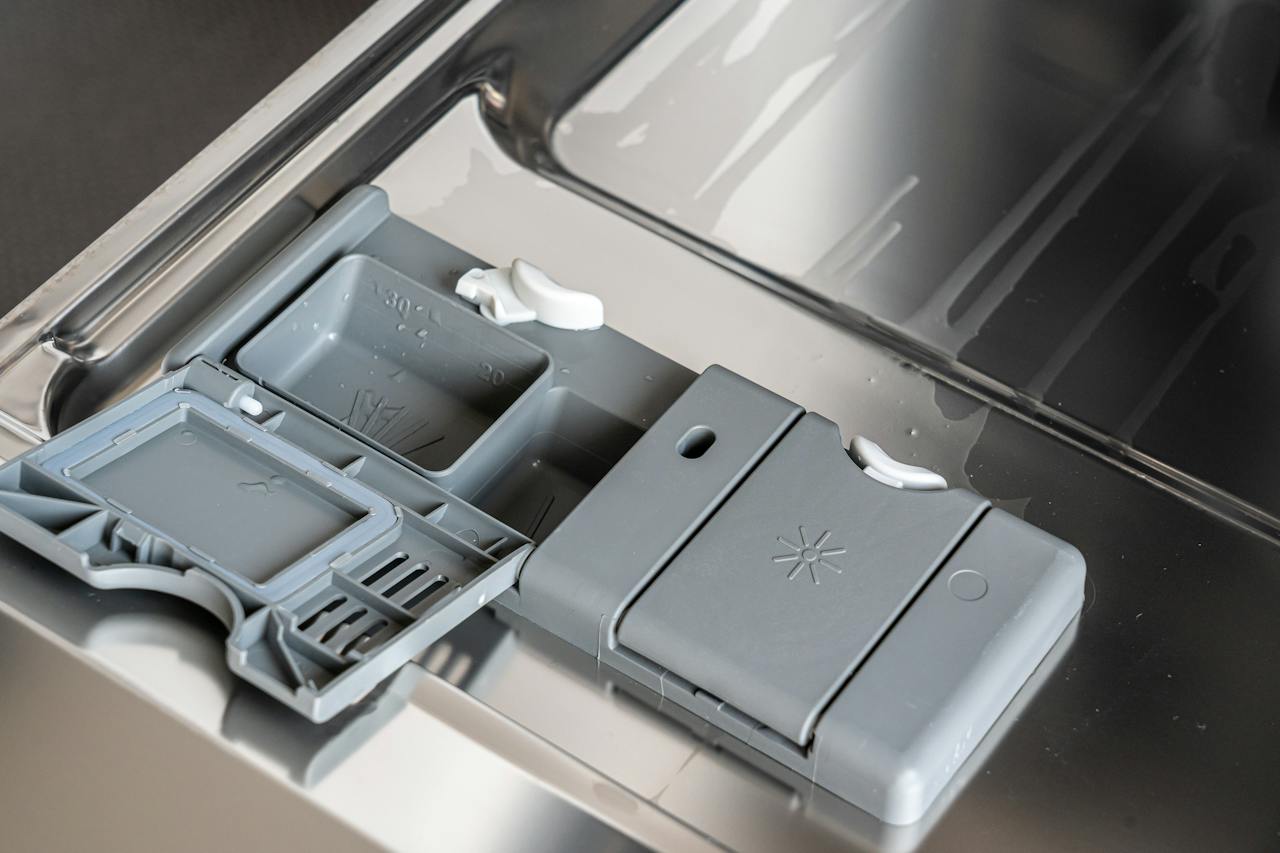A leaking dishwasher is a frustrating and messy problem that disrupts your daily routine and kitchen use. However, when dealing with this type of appliance issue you can find that you don’t always require a professional. Explore with the maydone experts the common reasons behind dishwasher leaks and provide a step-by-step guide on how to troubleshoot and fix the problem.
Start By Identify the Source of the Leak
The first step in fixing a leaking dishwasher is to identify the source of the leak. Common areas where leaks occur include:
- Door Seal: Check the door seal for any signs of wear, damage, or debris. A compromised door seal can allow water to escape during the wash cycle.
- Dishwasher Tub: Inspect the interior of the dishwasher for visible cracks, holes, or damage to the tub. Leaks originating from the tub may require more extensive repairs.
- Hoses and Connections: Examine the hoses and connections leading to and from the dishwasher. Loose or damaged hoses can result in leaks, especially during water intake and drainage.
- Float Switch Assembly: The float switch assembly regulates water levels in the dishwasher. If the float is stuck or the switch is malfunctioning, it can lead to overfilling and subsequent leaks.
Check the Door Seal
If the leak seems to be coming from the front of the dishwasher, inspect the door seal for any issues.
Wipe down the seal to ensure it is clean and free from debris. Look for visible signs of wear or damage. If the seal is compromised, it may need to be replaced.
Replacement door seals are often available from the dishwasher’s manufacturer.
Inspect the Tub for Breaks and Cracks
Carefully examine the interior of the dishwasher tub for any visible cracks or holes. If you find damage, you may need to replace the tub.
However, small cracks can sometimes be repaired using epoxy designed for dishwasher-safe applications. Follow the manufacturer’s instructions for applying and curing the epoxy.
Examine Your Hoses and Water Connections
Leaks originating from hoses or connections can often be resolved by tightening or replacing the affected components. Turn off the dishwasher and disconnect it from the power source.
Inspect the water supply and drain hoses for any visible damage or loose connections. Tighten the connections or replace damaged hoses as needed.
Check the Float Switch Assembly
The float switch assembly, located at the bottom of the dishwasher, helps control water levels. Ensure that the float moves freely and is not obstructed by debris.
If the float is stuck or the switch is malfunctioning, it may need to be replaced.
Consult your dishwasher’s manual for guidance on accessing and replacing the float switch assembly.
Inspect the Door Latch
A faulty door latch can also contribute to leaks. Check the door latch for any signs of damage or misalignment. If the latch is not securely closing the door, water can escape during the wash cycle.
Adjust or replace the latch as necessary to ensure a proper seal.
Run a Test Cycle
After addressing potential issues, run a test cycle to check for leaks. Place a towel or absorbent material around the dishwasher to quickly identify any new leaks.
If the problem persists, it may be time to consult a professional technician for a more in-depth inspection.
What Can You Do to Prevent Future Dishwasher Leaks?
Preventive Maintenance
Once you’ve fixed the leak, make sure to schedule preventive maintenance practices to avoid future issues. For example regularly cleaning the dishwasher’s interior, including the door seal and spray arms.
Check for debris in the drain and ensure that water drainage is unobstructed. Periodically inspect hoses and connections for signs of wear.
Professional Assistance
If you are unable to identify or fix the source of the leak, or if you are uncomfortable with DIY repairs, it’s advisable to seek professional assistance.
A certified technician can thoroughly assess your dishwasher and perform any necessary repairs or replacements.
You Can Do It!
Fixing a leaking dishwasher may require a bit of troubleshooting, but with the right approach, you can often identify and resolve the issue on your own.
From inspecting the door seal to checking hoses and connections, addressing the problem promptly can prevent further damage and keep your kitchen running smoothly.
Remember, when in doubt or if the issue persists, don’t hesitate to call a professional appliance technician.



